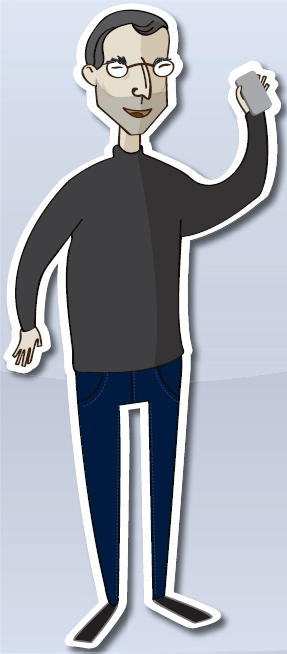
THE MAN FROM THEFUTURE
Steve Jobs perfectly exemplifies the principle of foreseeing the future and then making it happen. He had an uncanny ability to figure out where things were going long before others. Back in the mid-1970s, when mainframe computers and even minicomputers were still big and rather ominous machines, he somehow intuitively knew that everyone would one day want a personal computer—an absolutely audacious notion at the time. The Apple II, which launched the mass market for personal computers, went on to sell over 5 million units and became a common fixture in offices, schools, and homes—places nobody previously would have expected to see a computer. And of course that was just the beginning. With the introduction of the Macintosh in 1984, Jobs demonstrated his belief that technology in the future would be more “human” and less like a machine. He envisioned the computer as an appliance that was elegantly designed, friendly (it started up with a smiling face), intuitively easy to use (with a graphical user interface and mouse), and democratized (“the computer for the rest of us.”)60 This vision was in many ways decades ahead of its time.
During his “wilderness” years in exile from Apple, from the mid-1980s to the mid-1990s, Jobs continued to invest in technologies that he believed represented the future of computing. Although his company NeXT was not really a commercial ...
Get The Four Lenses of Innovation: A Power Tool for Creative Thinking now with the O’Reilly learning platform.
O’Reilly members experience books, live events, courses curated by job role, and more from O’Reilly and nearly 200 top publishers.

